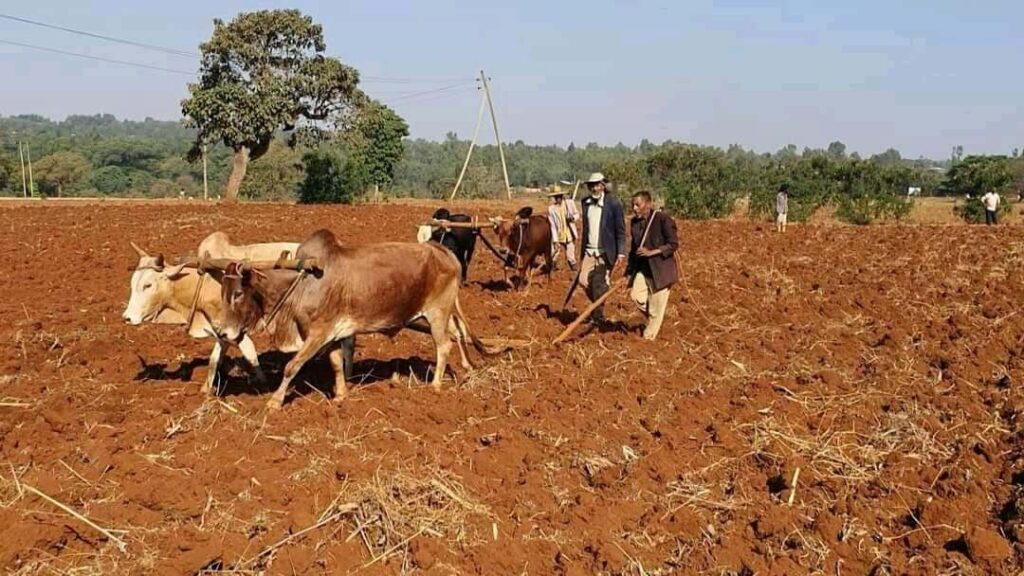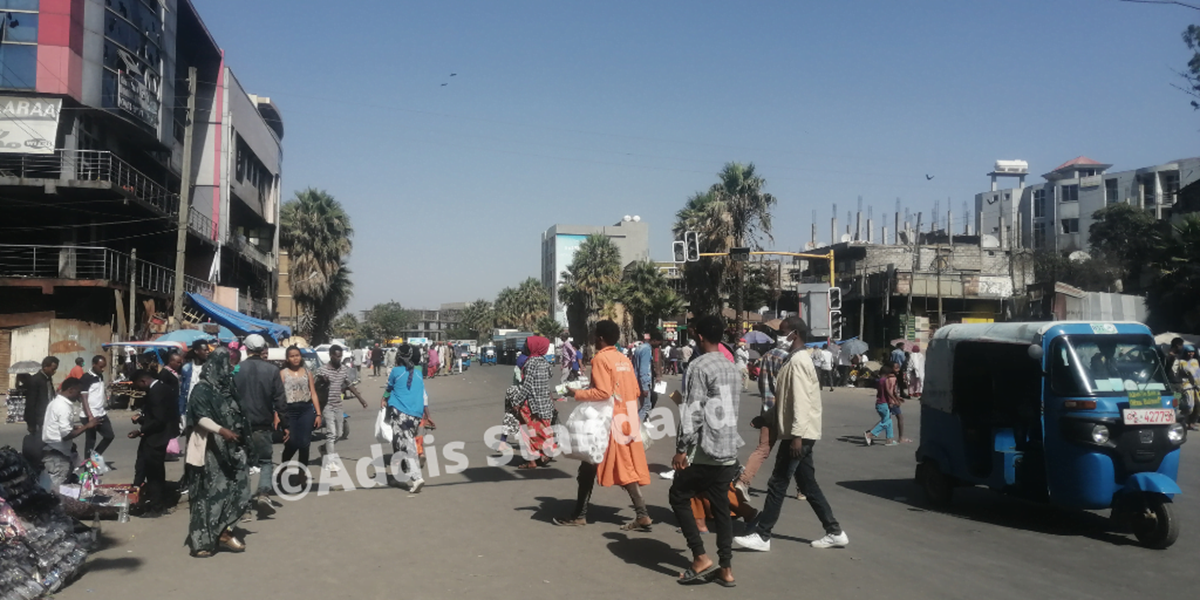News: Insecurity, reduced access to inputs cause alarming low plantation rate in Ethiopia’s Meher dependent areas

Farmers till the soil in Amhara regional state. Photo: AMC
Addis Abeba – A new report by the UNOCHA revealed that insecurity, including violence, flooding and reduced access to agricultural inputs in parts of Ethiopia that are dependent on the Meher, the February-to-May rainy season, resulted in alarming low plantation rates.
According to the report, Meher, the farming season prior to the main rainy season of Kiremt , which covers the months from June to September, “provided an opportunity for households to produce adequate food to meet their households’ requirements until the next harvest in 2024.”
About 80 per cent of the land has been cultivated across all Meher dependent areas, UN said. However, citing the Agriculture Cluster, the report said that only about 50 per cent has been planted in Amhara, 80 per cent in Oromia, 48 per cent in Benishangul Gumz, 50 per cent in SNNP, and 30 per cent in Tigray regional states.
“Factors to the low plantations were reportedly ascribable to insecurity and violence in some areas, such as portions of Oromia and Amhara, reduced access to inputs and levels of planting, while flooding in some areas, such as areas of SNNP, Oromia, and Somali regions, disrupted crop growth,” the report said.
The UN said that with the sectoral bureaus and multi-cluster engagement, a national seasonal assessment is underway (June/July) in Afar, Amhara, Oromia, Sidama, Somali, Southern Ethiopia, Southwest Ethiopia, and Tigray regions to measure the impact of Belg/Gu/Sugum rains (March to May) on crop yield, overall food and nutrition security and needs for response. The assessment is expected to be completed in the coming weeks and will be followed by an analysis of the results to inform the humanitarian response. This assessment will inform the mid-year review of the Humanitarian Response Plan.
It cautioned that there is an “urgent need to respond per the outcomes of the seasonal assessments closely with development partners and priorities resilience efforts (including in agriculture assistance), in conflict and drought affected, as the current agriculture needs go beyond humanitarian needs to be able to achieve a significant impact and build the capacities of the affected communities to cope with the current and future shocks.”
A reduced plantation rate of the Meher crops adds up to growing fears of the impacts of widespread lack of access to fertilizer by farmers in Amhara, Oromia, Sidama, Tigray and SNNP regions due mainly to delayed supplies and rampant illicit trading, forcing authorities to race against time to supply fertilizer.
This week, the he Ethiopian Ministry of Transport and Logistics said that following a campaign launched last week, it has been able to transport more than 60,000 metric tons of fertilizer from the Djibouti port only within three days between 21-23 July. Accordingly, the Ministry said that 439 cross border heavy trucks and 25 train wagons have been deployed, enabling the transportation of more than 20,000 metric tons of fertilizer to inland distribution centers on a daily basis.
Speaking to the African Union Heads of State and Governments summit in February Prime Minister Abiy Ahmed said that the government has been working “diligently to enhance agricultural productivity in the past four years”, and commenced an initiative that encourages small-holder farmers to farm in clusters that enable them to benefit from irrigation and mechanization.
“Our laser focus on wheat productivity is bearing fruit. And our ambition to begin exporting wheat this year has already materialized. A great achievement for Ethiopia. An even greater achievement for our continent,” PM Abiy said. AS








